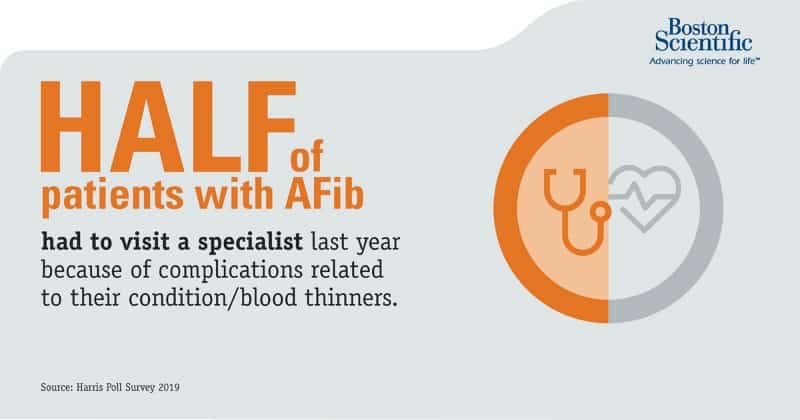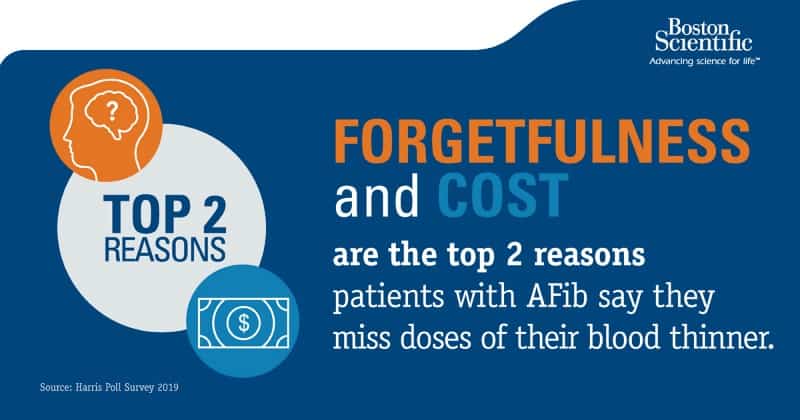Last Updated on August 4, 2020 by Ellen Christian
This post about nonvalvular atrial fibrillation was sponsored by Boston Scientific as part of an Influencer Activation for Influence Central and all opinions expressed in my post are my own.
Posts may be sponsored. This post contains affiliate links, which means I will make a commission at no extra cost to you should you click through and make a purchase. As an Amazon Associate I earn from qualifying purchases.
Have you heard of Nonvalvular Atrial Fibrillation? I hadn’t either until a year or so ago when my mother ended up in the emergency room. But, it’s an important phrase to understand when it comes to your heart. I’m so glad that my mother took care of this so that she could be with us for my daughter’s wedding a few months ago.
Nonvalvular Atrial Fibrillation
I’m not a doctor, so this is just my interpretation of what this means. If you have questions, you should always consult your own physician about what it means, and what to do. I’m just sharing my story about nonvalvular atrial fibrillation and what it means to me.
A year or so ago, my mother started getting tired more easily. She had problems going up and down the stairs and being active. She had always been overweight, so I just assumed it was somehow related. As it began to get worse, my father told me that they had an appointment for her to see her doctor. He told me that she’d known about this problem for about a year and that it had something to do with her heart.
Before she could get to that appointment, she ended up in the emergency room after fainting. That’s when we learned more about nonvalvular atrial fibrillation.
What is Nonvalvular Atrial Fibrillation
In simple terms, nonvalvular atrial fibrillation (AFib) is an irregular heart rhythm where your heart flutters instead of beats, and can be caused by a number of factors. So, what can you do? For one, people with AFib commonly take blood thinners to reduce their increased risk for stroke, but these medications can present bleeding and lifestyle challenges.
According to a recent Harris survey by Boston Scientific of patients with non-valvular atrial fibrillation, 92% of patients surveyed said they would consider a one-time implant that would make their AFib easier to manage, such as by not needing to deal with the risks and challenges associated with blood thinners. That’s because 37% of that group believe the device may give them greater flexibility to do the things they want to do in their daily life. Even with a clear need, though, the vast majority of patients surveyed (82%) have never heard of the WATCHMAN™ Left Atrial Appendage Closure Device.
What happens if you don’t treat AFib?
Left untreated, AFib can lead to stroke, damage your heart, or lead to heart failure, which is what happened to my mother. That is why it’s so important that you speak to your doctor and follow their recommendations. Don’t put it off. Questions about your health should always be discussed with your physician. I’m so glad that my mother dealt with this before it was too late.
What does NVAF mean?
Atrial fibrillation (AFib) is the most common type of irregular heartbeat. It affects more than five million Americans. Because of their irregular heartbeat, people with AFib have a five times greater risk of suffering from a stroke than someone with a regular heartbeat.1 NVAF is an abbreviation for nonvalvular atrial fibrillation. The condition can also be abbreviated AFib.
Reducing the risk of stroke in those with nonvalvular atrial fibrillation
Some people take blood thinners to reduce their AFib-related stroke risk, but more than one in five patients with AFib do not take their blood thinners as directed. 21% of patients miss a dose of their blood thinners at least once a month.
The WATCHMAN device serves as an alternative to warfarin, a common blood thinner, for those who need another option, and is the only FDA-approved implant proven to reduce stroke risk in people with non-valvular AFib.
WATCHMAN is implanted through a one-time procedure with a proven safety record. There are now 100,000 WATCHMAN devices in use worldwide!
You can find out if you or your loved one may be a candidate for the WATCHMAN device by visiting the WATCHMAN website or talking to your cardiologist today! As with any medical procedure, also ask your cardiologist about risks associated with the WATCHMAN device, including internal bleeding, stroke, and others. Find out more today
1 January CT, Wann LS, Alpert JS, et al. 2014 AHA/ACC/HRS guideline for the management of patients with atrial fibrillation: a report of the American College of Cardiology/American Heart Association Task Force on practice guidelines and the Heart Rhythm Society. Circulation.
2014 Dec 2;130(23):e199-267. doi: 10.1161/CIR.0000000000000041. Epub 2014 Mar 28. No abstract available. Erratum in: Circulation. 2014 Dec 2;130(23):e272-4.

Ellen is a busy mom of a 24-year-old son and 29-year-old daughter. She owns six blogs and is addicted to social media. She believes that it doesn’t have to be difficult to lead a healthy life. She shares simple healthy living tips to show busy women how to lead fulfilling lives. If you’d like to work together, email info@confessionsofanover-workedmom.com to chat.




